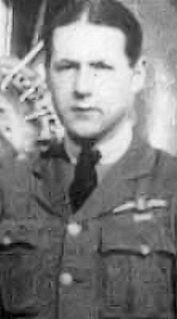Related Research Articles
William Ernest Shields DFC & Bar was a Canadian First World War flying ace, officially credited with 24 victories.
Captain Ernest Charles Hoy DFC was a Canadian First World War flying ace, officially credited with 13 victories. He later pioneered airmail flight over the Canadian Rockies.
Lieutenant Harold Byrn Hudson MC was a Canadian First World War flying ace, officially credited with 13 victories. As wingman to William George Barker, he scored a record five victories over observation balloons in a single day.
Squadron Leader Charles John Wharton Darwin DSO RAF was a First World War flying ace credited with five aerial victories.
Lieutenant George William Gladstone Gauld was a World War I flying ace credited with five aerial victories.
Lieutenant Ernest Lindup was a South African World War I flying ace credited with five aerial victories.
Lieutenant Harold Arthur Sydney Molyneux was a World War I flying ace credited with five aerial victories. During World War II, he returned to service in the Royal Canadian Air Force.
Captain Henry Gordon Clappison was a World War I flying ace credited with six aerial victories.
Lieutenant Cecil Robert Thompson was a South African World War I flying ace credited with six aerial victories.
Second Lieutenant Maurice Edmund Mealing MC was a World War I flying ace credited with 14 aerial victories.

Lieutenant Kenneth Russell Unger was an American World War I flying ace credited with fourteen aerial victories. His candidacy rejected by his own nation, Unger applied to the British Royal Flying Corps for military pilot training in June 1917. Once trained, he was assigned to the Royal Naval Air Service (RNAS). As the RNAS was merged into the Royal Air Force, Unger scored his aerial victories between 26 June and 1 November 1918. In later life, Unger remained involved in aviation and served again during World War II. He also joined the U.S. Navy Reserves, rising to the rank of rear admiral.
Herbert Gilles Watson, was an Australian flying ace of the First World War credited with 14 aerial victories. He was the highest scoring New Zealand-born ace in the Australian Flying Corps, and the fourth highest scorer in his squadron.
Captain Eric John Stephens was an Australian flying ace who served in the Royal Air Force. He was credited with 13 confirmed aerial victories. He later became a Qantas pilot.
Lieutenant William Henry Brown was a Canadian World War I flying ace credited with nine aerial victories.
Richard Jeffries Dawes DFC was a Canadian World War I flying ace credited with nine aerial victories.
Lieutenant Frederick Stanley Gordon was a World War I flying ace from New Zealand. While serving in Britain's Royal Air Force, he scored nine aerial victories as a fighter pilot.
Captain John William Aldred was an English World War I flying ace credited with eight aerial victories. He began military service in World War I as an infantryman and transferred to flight duty as an observer. After scoring two aerial victories and winning the Military Cross, he qualified as a fighter pilot, scored six more triumphs, and earned a Bar to his MC in lieu of a second award.
Lieutenant Julien Anatole Guertiau was a cavalryman turned aviator who became a flying ace during World War I. He was credited with eight aerial victories.
Lieutenant Malcolm Plaw MacLeod was a Canadian flying ace. He was credited with seven aerial victories scored during the closing days of World War I. He then returned to Canada to complete his education and work as a stockbroker until World War II, when he served in the Royal Canadian Air Force for the war's duration.

Lieutenant Robert Miles Todd was an American World War I flying ace credited with five enemy planes destroyed.
References
- Shores, Christopher F.; Franks, Norman L. R.; Guest, Russell. Above The Trenches: A Complete Record of the Fighter Aces and Units of the British Empire Air Forces 1915-1920. Grub Street, 1990. ISBN 0-948817-19-4, ISBN 978-0-948817-19-9.